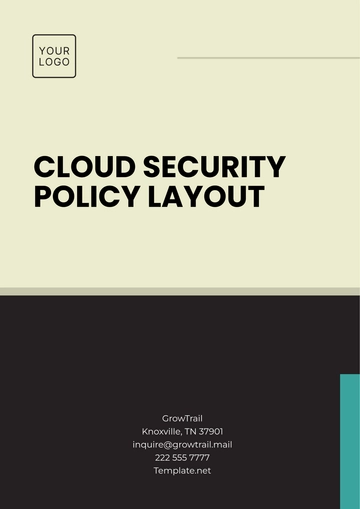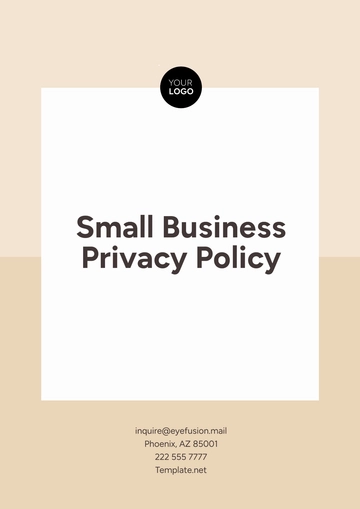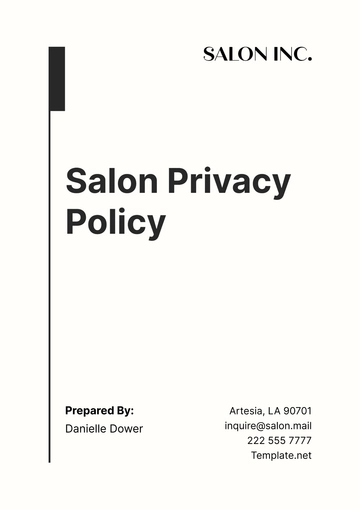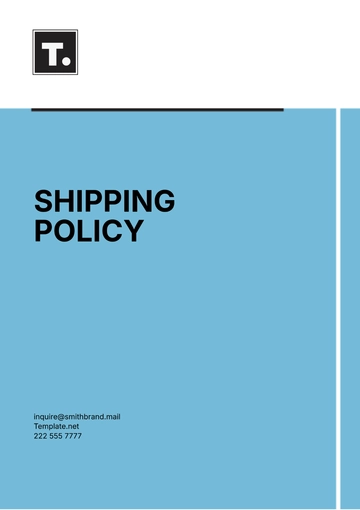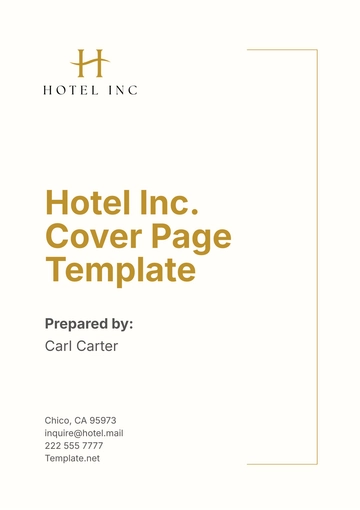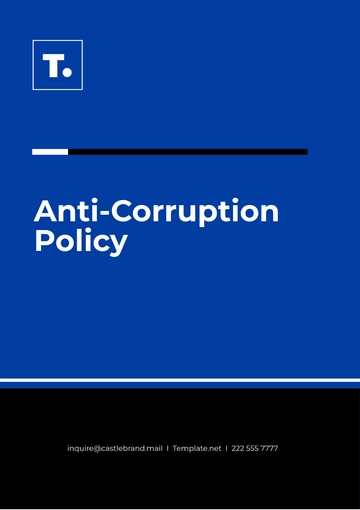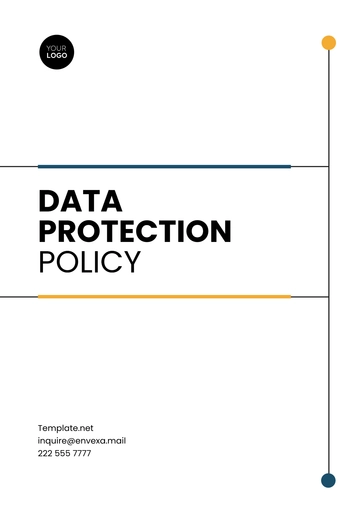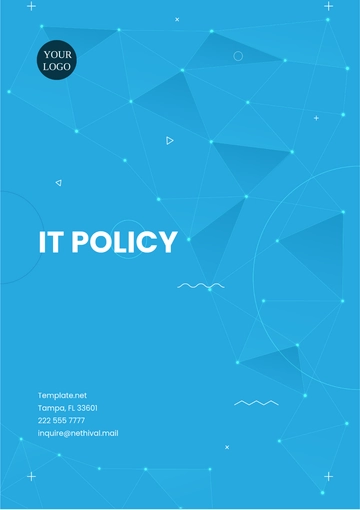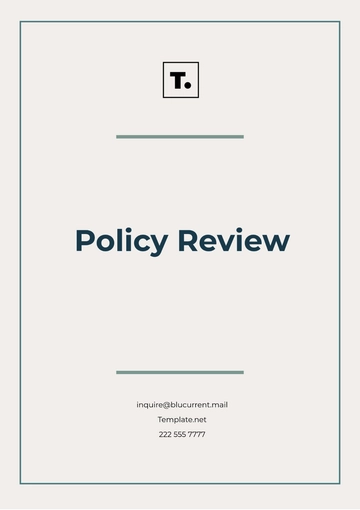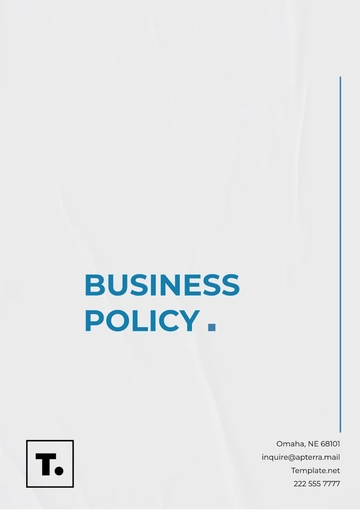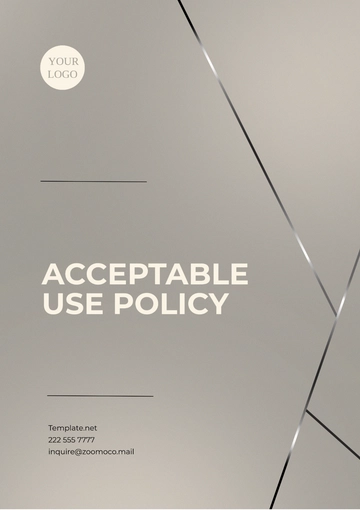Free Sales Policy & Procedure on Handling Deal Disputes
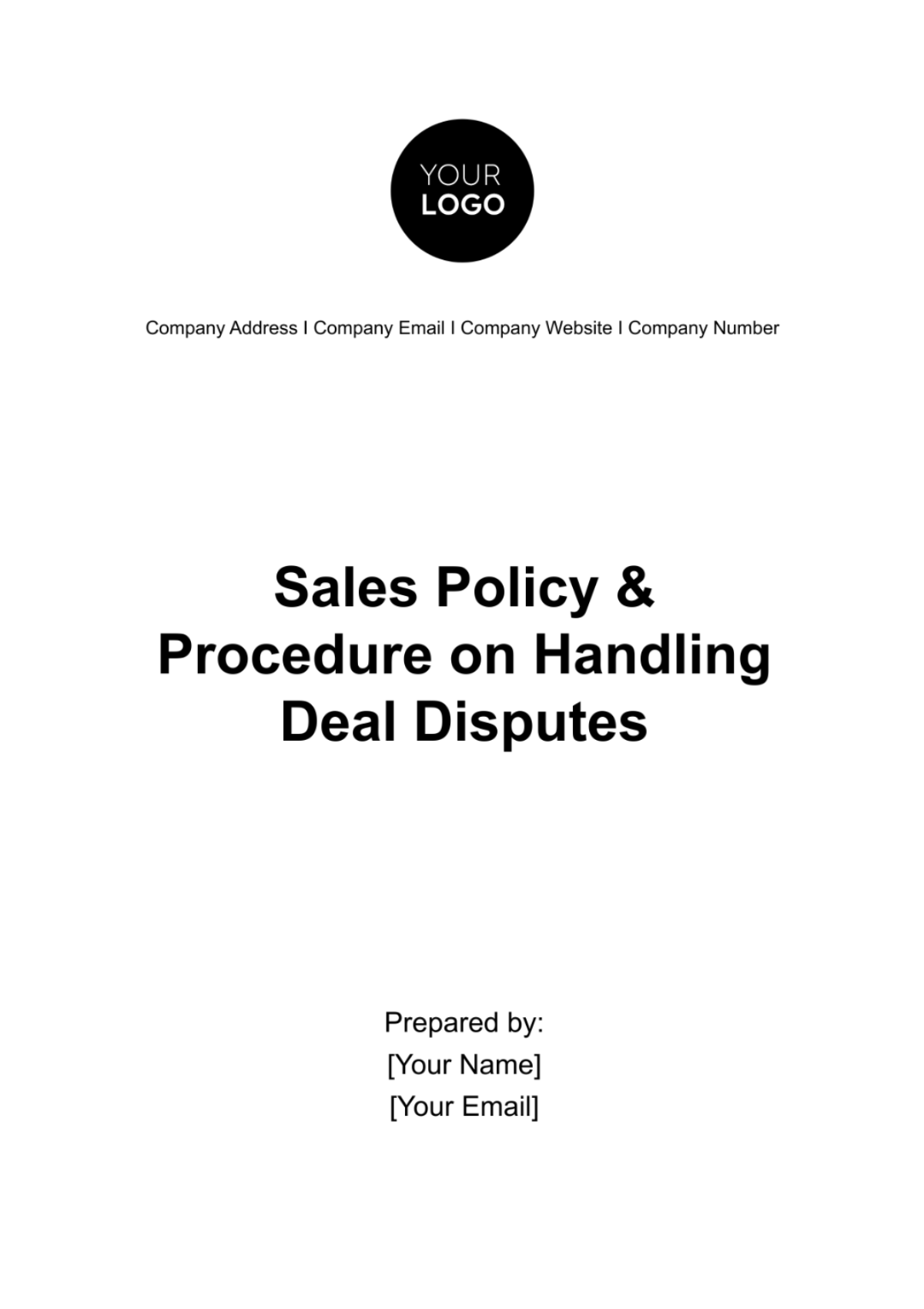
Introduction
This Sales Policy & Procedure Manual is meticulously crafted to serve as the cornerstone for addressing and managing deal disputes within [Your Company Name]. Our mission is to ensure a transparent, equitable, and efficient resolution framework that upholds our core values and commitment to excellence in every aspect of our sales operations.
Acknowledging the potential for disagreements or challenges to arise during sales negotiations and deal closures, this manual is dedicated to equipping our team with the requisite guidelines to navigate and resolve such conflicts with professionalism and integrity.
Scope
This document is universally applicable to all [Your Company Name] personnel directly or indirectly engaged in the sales continuum, encompassing sales representatives, sales managers, and any additional staff members involved in the sales negotiation and execution phases.
It is designed to comprehensively address disputes that may emerge pertaining to negotiation tactics, terms and conditions of sales, and the ultimate conclusion of sales agreements. Through a steadfast commitment to transparency and a customer-centric approach, this policy underscores our dedication to systematically and effectively addressing any concerns that may impede our mutual success.
Definitions
In the context of this Sales Policy & Procedure Document, precise terminology is employed to ensure clarity and uniformity in understanding and application across all levels of [Your Company Name]. The following definitions are essential for interpreting the policies and procedures outlined within this manual. These terms encapsulate key roles and scenarios that are pivotal to the sales process, providing a foundation for the resolution mechanisms set forth in this document.
Deal Dispute: This term refers to any scenario in which a disagreement or conflict surfaces between [Your Company Name] and a customer or partner relating to the specific terms, conditions, or fulfillment obligations of a sales agreement. Deal disputes may encompass a wide range of issues, including but not limited to, discrepancies in the interpretation of contract terms, expectations concerning product or service delivery, and fulfillment of agreed-upon conditions.
Sales Representative: A sales representative is an employee tasked with the direct interaction with clients and prospects. Their responsibilities extend to initiating contact with potential customers, engaging in discussions to understand customer needs, negotiating the terms of sales, and effectively closing deals. Sales representatives are the frontline personnel who play a critical role in maintaining and expanding the company's customer base.
Sales Manager: This designation pertains to the supervisory role within the sales department, tasked with overseeing the activities of sales representatives and ensuring the smooth operation of sales processes. A sales manager is responsible for strategizing sales approaches, managing team performance, setting sales targets, and facilitating the resolution of deal disputes. Their leadership is crucial in nurturing a productive sales environment and driving the company towards its sales objectives.
Customer Satisfaction: This term embodies the measure of how the products or services provided by [Your Company Name] meet or surpass customer expectation. It is a fundamental indicator of the company’s ability to fulfill customer needs and plays a pivotal role in handling disputes and retaining clients. A high level of customer satisfaction is indicative of the company's success in delivering value and maintaining a positive relationship with its customers.
Negotiation Process: Refers to the series of interactions between sales representatives of [Your Company Name] and potential or existing customers or partners aimed at reaching a mutual agreement over the terms of a sales deal. The negotiation process is critical for clarifying the conditions of the sale, aligning expectations, and ensuring a mutual understanding and agreement on the specifics of the contract or sale agreement.
Contractual Agreement: This term refers to the legally binding document or set of documents that delineate the terms and conditions agreed upon by [Your Company Name] and the customer or partner. It includes all pertinent details such as product specifications, delivery timelines, payment terms, and obligations of both parties. The contractual agreement serves as the definitive reference for resolving any disputes that may arise regarding the sales deal.
Resolution Mechanism: Denotes the structured approach or set of procedures adopted by [Your Company Name] to address and resolve deal disputes. This mechanism includes steps for dispute identification, assessment, negotiation, and resolution, ensuring that all conflicts are managed and resolved in a timely, fair, and efficient manner.
Compliance Standards: These are the established guidelines and regulations that [Your Company Name] adheres to in conducting its sales processes. Compliance standards ensure that the company operates within legal and ethical boundaries, safeguarding against malpractice and enhancing the integrity of its sales operations. Understanding these standards is essential for all employees to prevent disputes related to regulatory violations.
Incorporating these key points into the Definitions section enriches the understanding of the Sales Policy & Procedure Document, providing employees with a clearer and more comprehensive framework within which to operate. This expanded glossary not only aids in the resolution of deal disputes but also fosters a more knowledgeable and effective sales team.
Procedure
The procedure for addressing deal disputes at [Your Company Name] is structured to ensure a methodical and empathetic approach towards resolution. This detailed process is designed to facilitate communication, uphold our commitment to customer satisfaction, and maintain the integrity of our sales operations.
Initial Contact
The sales representative associated with the disputed deal serves as the initial point of contact for the customer or partner. It is imperative that the sales representative engages in active listening, demonstrates empathy, and meticulously collects all pertinent information related to the dispute.
Escalation
Should the sales representative be unable to directly resolve the dispute, the matter must be escalated to their Sales Manager within [X] business days.
Sales Manager's Responsibility
The Sales Manager is tasked with reviewing the dispute's details, encompassing all relevant communications, documentation, and agreements. A meeting with the sales representative is convened to comprehend their perspective and acquire further insights. The Sales Manager then endeavors to mediate the dispute, aiming for an amicable resolution with the customer or partner.
Involvement of Higher Management
If the dispute remains unresolved at the Sales Manager level, escalation to higher management, including the Director of Sales or the Chief Sales Officer, is warranted. This step is particularly necessary for disputes of significant magnitude or complexity.
Documentation
Throughout the resolution process, meticulous documentation of all communications and actions undertaken is mandatory. This documentation is vital for monitoring the dispute's progression, ensuring procedural transparency, and serving legal purposes when required.
Legal Consultation
In instances where internal resolution proves unattainable, the company may resort to legal consultation. Legal proceedings are to be managed by the company's legal department or through consultation with an external legal expert.
Final Resolution
Following the attainment of a resolution, the Sales Manager or designated higher authority is responsible for effectively communicating the outcome to the customer or partner. They must also guarantee the swift implementation of any adjustments or modifications agreed upon, pertaining to the deal. The final resolution, alongside any alterations to the original agreement, must be comprehensively documented, closing the dispute resolution process.
This structured approach ensures that all deal disputes are handled with the utmost professionalism, fairness, and efficiency, reflecting [Your Company Name]'s dedication to excellence in customer service and integrity in sales practices.
Review and Update
To maintain the relevance and effectiveness of our Sales Policy & Procedure Document, particularly in the area of handling deal disputes, a structured review and update process is crucial. This ensures that our practices not only align with our evolving company objectives but also comply with the latest industry regulations and standards. Below outlines the formal procedure for the periodic review and enhancement of this document:
Annual Review Cycle: The document will undergo a comprehensive review on an annual basis. This review will assess the efficacy of the dispute resolution procedures and their alignment with the company's strategic goals and industry best practices.
Activity
Frequency
Responsible Party
Initial Review
Annually
Sales Policy Review Team
Ad-hoc Updates: In addition to the scheduled annual reviews, ad-hoc updates may be prompted by significant changes in legal requirements, shifts in industry standards, or the identification of improvements based on feedback from customers, partners, and internal stakeholders.
Trigger for Update
Action Required
Responsible Party
Changes in legal requirements
Review relevant sections of the document for compliance
Legal Department
Commitment to Improvement: Our dedication to excellence and customer satisfaction drives our continuous effort to enhance our processes. This includes refining our approach to handling deal disputes, to better serve the needs of our customers and partners while ensuring operational efficiency and compliance.
Stakeholder Engagement: The review process will engage key stakeholders across various departments, including sales, legal, and customer service, to gather comprehensive insights and recommendations for improvements.
Implementation and Communication:
Following the review, any amendments to the document will be promptly implemented. Relevant parties, including sales personnel and management, will be informed of the changes to ensure a seamless transition and adherence to the updated procedures.
This structured approach to regularly reviewing and updating the Sales Policy & Procedure Document underscores our commitment to continuous improvement, ensuring that our dispute resolution practices remain effective, compliant, and aligned with our overarching objectives.
Training and Awareness
In our commitment to handling deal disputes effectively and consistently, a crucial component of this policy involves fostering a culture of continuous improvement, education, and awareness among our sales team. This section expands on the critical aspects of training and awareness within [Your Company Name]:
Ongoing Training Programs
To equip our sales representatives and managers with the skills and knowledge necessary to handle deal disputes, we have established comprehensive training programs. These programs cover a variety of topics, including negotiation techniques, conflict resolution, communication skills, and familiarity with the legal and contractual aspects of deals. Training sessions are conducted regularly and tailored to the evolving needs of our team.
Cross-Functional Training
Deal disputes may involve complex issues that require cross-functional expertise. Therefore, our training extends beyond the sales team. We encourage collaboration and cross-functional training sessions that involve legal experts, customer service representatives, and other relevant departments. This not only broadens our team's understanding of potential disputes but also promotes a cohesive approach to resolution.
Scenario-Based Training
Real-life scenarios are an integral part of our training approach. We create and analyze simulated deal dispute situations to help our team members understand the practical challenges they may face. These exercises allow our staff to practice conflict resolution in a controlled environment, fostering confidence and competence in addressing real disputes.
Access to Resources
To ensure our employees are well-equipped to handle disputes, we provide them with access to a comprehensive library of resources. These resources include documentation templates, best practices, legal guidelines, and any relevant policies and procedures. In addition, we maintain an internal knowledge base where employees can seek guidance and learn from past dispute cases.
Awareness Programs
Awareness is a fundamental aspect of our approach. We conduct regular awareness programs and workshops to keep our team informed about the importance of dispute resolution in maintaining strong customer relationships. We emphasize our commitment to transparency, professionalism, and our dedication to customer satisfaction. These programs also encourage a proactive approach to dispute prevention.
Feedback and Improvement
As part of our ongoing commitment to excellence, we encourage open feedback from our employees regarding our training and dispute resolution procedures. This feedback allows us to continually refine and enhance our training programs, ensuring that they remain relevant and effective in addressing the evolving needs and challenges within our sales operations.
Certification and Recognition
We value the dedication and expertise of our team in resolving deal disputes. To recognize their proficiency and commitment, we have established certification programs. Employees who excel in dispute resolution may receive official recognition and rewards. These programs motivate our team to continuously improve and excel in their roles.
By placing significant emphasis on training and awareness, [Your Company Name] strives to not only resolve deal disputes but also prevent them through better communication, understanding, and preparation. Our commitment to these principles ensures that we are not only reactive but proactive in preserving the strong relationships we have with our customers and partners.
Customer and Partner Communication
Our commitment to handling deal disputes also extends to maintaining effective communication with our customers and partners. This section outlines the principles guiding our communication efforts:
Timely Response
We acknowledge the importance of responding promptly to customer or partner concerns. Our goal is to acknowledge receipt of their dispute within 48 business hours and initiate the resolution process in a timely manner.
Transparency
Transparency is at the core of our communication strategy. We are committed to keeping customers and partners informed about the progress of their dispute. We provide regular updates and maintain open lines of communication to ensure that all parties are aware of the status of their case.
Professionalism
All interactions with customers and partners, whether written or verbal, are conducted with the highest level of professionalism. We emphasize respectful, empathetic, and solution-oriented communication that upholds our brand reputation.
Privacy and Confidentiality
We understand the sensitivity of certain disputes and the importance of maintaining privacy and confidentiality. All customer and partner information is handled with the utmost care, and only authorized personnel have access to such information.
Continuous Improvement
Deal disputes are valuable learning opportunities. This section outlines our commitment to analyzing and improving our processes based on insights gained from dispute resolution:
Root Cause Analysis
After the resolution of each dispute, we conduct a root cause analysis to determine the underlying reasons for the conflict. This analysis helps us identify recurring issues and areas for improvement.
Process Enhancement
Based on the findings of the root cause analysis, we actively work on enhancing our sales processes to prevent similar disputes in the future. Process changes may include revised contract language, improved negotiation guidelines, or enhanced training.
Feedback Mechanism
We encourage all employees to provide feedback on our dispute resolution processes. This feedback mechanism ensures that employees have a voice in shaping our procedures and that we remain agile in adapting to new challenges.
Escalation Procedures
In cases where a deal dispute cannot be resolved at the Sales Manager or higher management level, this section details the procedures for further escalation:
Executive Review
If a dispute remains unresolved after escalation to higher management, it may be reviewed by an executive committee consisting of senior leadership within the organization. This committee may include the Chief Executive Officer (CEO) or other top executives.
Legal Action
If all internal avenues have been exhausted, the company may consider legal action as a last resort. This decision is made in consultation with the legal department and is guided by the applicable laws and regulations.
Conclusion
This document culminates with a reaffirmation of [Your Company Name]'s unwavering commitment to managing deal disputes with utmost professionalism and efficacy. It underscores our pledge to uphold the highest standards of customer satisfaction, ensuring that every interaction is characterized by transparency and integrity. Furthermore, it highlights our dedication to the principle of continuous improvement, acknowledging that the evolution of our policies and procedures is a testament to our relentless pursuit of excellence. Through this document, we aim not only to address and resolve conflicts but also to strengthen the trust and confidence that our customers and partners place in us.
- 100% Customizable, free editor
- Access 1 Million+ Templates, photo’s & graphics
- Download or share as a template
- Click and replace photos, graphics, text, backgrounds
- Resize, crop, AI write & more
- Access advanced editor
Navigate deal disputes with confidence using the Sales Policy & Procedure on Handling Deal Disputes Template from Template.net. This editable, customizable template outlines clear protocols for resolution, ensuring fair and effective handling. Modify it to suit your organization's standards with our Ai Editor Tool, maintaining professionalism in challenging situations.
You may also like
- HR Policy
- Restaurant Policy
- Company Policy
- Accounting Policies and Procedures
- Website Policy
- Privacy Policy
- Safety Policy
- School Policy
- IT and Software Policy
- Law Firm Policy
- Construction Policy
- Interior Design Policy
- Travel Agency Policy
- Education Academic Policy
- Security Policy
- Real Estate Policy
- Expense Policy
- Software Policy

